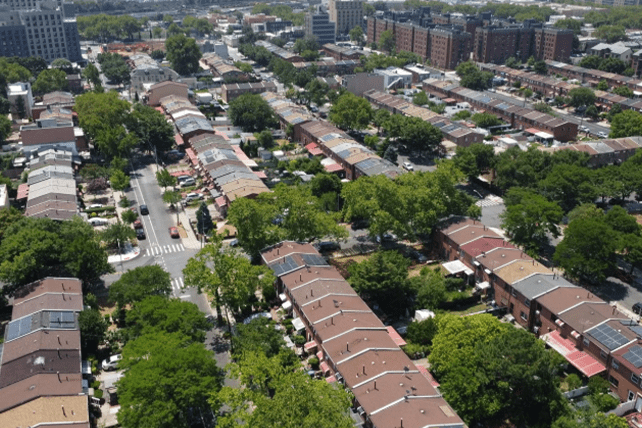NEW YORK (RNS) — Not a week goes by at St. Paul Community Baptist Church in Brooklyn without the congregation having to bid farewell to another member. Since the end of the pandemic, many young families and retirees have left the East Brooklyn church because they can’t afford to live in New York City anymore.
Until recently, the 3,000-member congregation hosted three Sunday morning services: 6 a.m., 8 a.m. and 11 a.m. However, it has canceled its 6 a.m. service, formerly frequented mostly by older congregants, sometimes 300 at once. The church has since invested in its online programming to keep up with the hundreds of members who have relocated to places like Atlanta, Charlotte and Philadelphia.
These regular goodbye sessions have also taken an emotional toll on the congregation, noted the Rev. David K. Brawley, St. Paul’s lead pastor.
“Some of my core leaders walk up to me in tears saying, ‘I just can’t,’ and almost, seemingly in shame, ‘I can’t afford to stay here anymore,’” he said.
St. Paul Community Baptist Church, and other churches located in the East New York neighborhood of Brooklyn, are joining together in hopes of reversing the tide by keeping the neighborhood accessible to low-income families. Among other ideas, the churches want to encourage other houses of worship to build affordable housing on their vacant lots.
One of the main challenges today is finding land on which to build housing. Church-owned parcels can be repurposed for this, Brawley said, noting that churches could also bank on these housing projects to diversify their revenue since many are struggling financially as congregations shrink.
St. Paul Community Baptist believes up to 800 affordable units could be built on its parking lots. The church’s application to use city land is currently in its last stage, the Uniform Land Use Review Procedure, which can take about seven months.
After being reviewed by the Department of City Planning, the application will be examined by community boards impacted by the project, the borough president, the city planning commission, the city council and the mayor.
The church has also suggested that underutilized parking lots in existing public housing complexes could be used to build up to 15,000 senior housing units. It also believes schools, hospitals and state-owned parcels offer great opportunities for housing construction.
New York has launched similar efforts in other neighborhoods. The city administration, in 2016, launched the New York Land Opportunity Program to support faith-based organizations in their construction projects. The initiative was brought by the Department of Housing Preservation and Development and the Mayor’s Community Affairs Unit in partnership with Local Initiatives Support Corporation New York (LISC NY), a nonprofit advocating for community development.
Five churches were selected as part of the program and received technical assistance from attorneys, architects and LISC housing officers to draft requests for proposals. The congregations involved were the Community Church of New York in Manhattan; St. Luke’s Episcopal Church in the Bronx; Shiloh Church of Christ in Central Harlem; Wakefield Grace Methodist Church in Wakefield, Bronx; and St. John’s Global Ministries in Queens.
Shiloh Church of Christ told RNS the program was helpful and gave the church much-needed direction to set up a request for its proposal and to advertise the project. The church now waits to land a deal.

